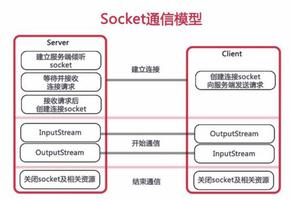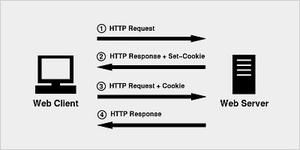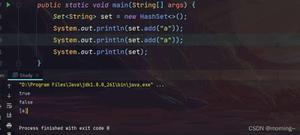Python 从attribute到property详解
字面意思上的区别
Attribute与property, 都可翻译成属性. 虽然无论是在中文中还是英文中 它们的意思都几乎一样, 但仍有些许差别. Google了好几下, 找到了一个看起来比较靠谱的解释:
According to Webster, a property is a characteristic that belongs to a thing's essential nature and may be used to describe a type or species.
An attribute is a modifier word that serves to limit, identify, particularize, describe, or supplement the meaning of the word it modifies.
简单来说, property是类的本质属性, 可用于定义和描述一个类别或物种; attribute则是用于详细说明它所描述的物体, 是物体的具体属性.
例如: 人都有嘴巴. 有的人嘴巴很大, 嘴巴是人的property之一, 而大嘴巴只能说是部分人的attribute.
从这个意义上讲, property是attribute的子集.
Python里的attribute与property
回到Python.
Attribute与property在Java中不作区分, 但在Python中有所不同. 下面是Fluent Python(Chapter 19)给出的(非正式)定义:
接下来分别解释.
attribute
所有的数据属性(data attribute)与方法(method)都是attribute. 根据attribute的所有者, 可分为class attribute与instance attribute. class或instance的所有attribute都存储在各自的__dict__属性中.
例如:
# Python3
class Foo():
name = 'Foo class attribute'
def fn(self):
pass
print('class attribute:', Foo.__dict__)
print()
foo = Foo()
foo.name = 'foo instance attribute'
print('instance attribute:', foo.__dict__)
输出:
class attribute: {'fn': <function Foo.fn at 0x7fd135ec8ea0>, ... , 'name': 'Foo class attribute'}
instance attribute: {'name': 'foo instance attribute'}
property
property是出于安全考虑用setter/getter方法替代data attribute, 例如, 只读属性与属性值合法性验证.
只读属性
例如:
class Foo():
def __init__(self, name):
self.name = name
foo = Foo('I do not want to be changed')
print('foo.name = ', foo.name)
foo.name = 'Unluckily, I can be changed'
print('foo.name = ', foo.name)
输出:
foo.name = I do not want to be changed
foo.name = Unluckily, I can be changed
在上面的代码中, 假如我们只想将foo的name属性暴露给外部读取, 但并不想它被修改, 我们该怎么办? 之前在Python 定义只读属性中列出了两种解决方案. 第一种方案:”通过私有属性”, 其实就是用property替代attribute.
将上面的foo.name改写成property:
class Foo():
def __init__(self, name):
self.__name = name
@property
def name(self):
return self.__name
foo = Foo('I do not want to be changed')
print('foo.name = ', foo.name)
foo.name = 'Luckily, I really can not be changed'
输出:
foo.name = I do not want to be changed
---------------------------------------------------------------------------
AttributeError Traceback (most recent call last)
<ipython-input-69-101c96ba497e> in <module>()
9 foo = Foo('I do not want to be changed')
10 print('foo.name = ', foo.name)
---> 11 foo.name = 'Luckily, I really can not be changed'
AttributeError: can't set attribute
有两点需要注意:
foo.name确实已经不能通过foo.name = ...来修改了, 即, foo.name已经是只读属性.
将foo.name从attribute变成property之后, 它的访问方式并没有改变. 也就是说, 对外接口没有改变. 这个优点可以让我们从容的写代码, 不用在一开始就纠结于是使用property还是attribute, 因为可以都使用attribute, 如果有需要, 以后可以在不影响外部代码的前提下随时修改. 而在Java里要做到这一点很难(如果可以做到的话).
属性值合法性验证
在上面的例子中, foo.name只有getter方法, 是只读的, 但其实property也是可修改的, 只需要为它添加一个setter方法就行了. 那么问题就来了, 如果property也是可读可改, 那为何要费事将attribute改写成property呢?
想象一个简单的购物相关的业务场景. 一个Item代表用户购买的一样东西, 主要有类别, 价格和数量属性:
class Item():
def __init__(self, category, count, price):
self.cat = category
self.count = count
self.price = price
正常的调用是类似于这样的, 价格与数量都是正数:
item = Item('Bread', 1, 10)
可是, 若价格或数量设置为负数也不会报错:
item.price = -10
item.count = -1
invalid_item1 = Item('Bread', -1, 10)
invalid_item2 = Item('Bread', 1, -10)
从语法上看, 这些语句都是合法的, 但从业务上看, 它们都是不合法的. 那么, 怎样才能防止这种非法赋值呢? 一种解决方案是按照Java风格, 实现一个Java式的setter方法, 通过item.set_price(price)设置price属性, 然后在set_price方法里写验证代码. 这样是可行的, 但不够Pythonic. Python的风格是读与写都通过属性名进行:
print(item.price)
item.price = -10
这样做的好处之前提到过: 将attribute改写成property时不会改变对外接口. 那么, 如何在执行item.price = -10时检验-10的合法性呢? 最直白的方法是在__setattr__方法里设置拦截, 但很麻烦, 特别是当需要验证的属性很多时.(不信的话可以参照Python 定义只读属性的方案二试试).
Python提供的最佳方案是通过property的setter方法:
class Item():
def __init__(self, category, count, price):
self.__cat = category # attribute
self.count = count # property
self.price = price # property
@property
def cat(self):
return self.__cat
@property
def count(self):
return self.__dict__['count']
@count.setter
def count(self, value):
if value < 0:
raise ValueError('count can not be minus: %r'%(value))
self.__dict__['count'] = value
@property
def price(self):
return self.__dict__['price']
@price.setter
def price(self, value):
if value < 0:
raise ValueError('price can not be minus: %r'%(value))
self.__dict__['price'] = value
之前合法的语句现在仍然可以正常运行:
item = Item('Bread', 1, 10)
item.price = 20
item.count = 2
print(item.price)
但下面的语句执行时便会报错了:
item = Item('Bread', 1, -10)
# or
item.price = -10
会报出同一个错误:
---------------------------------------------------------------------------
ValueError Traceback (most recent call last)
<ipython-input-93-4fcbd1284b2d> in <module>()
----> 1 item.price = -10
<ipython-input-91-7546240b5469> in price(self, value)
27 def price(self, value):
28 if value < 0:
---> 29 raise ValueError('price can not be minus: %r'%(value))
30 self.__dict__['price'] = value
ValueError: price can not be minus: -10
定义property的其他方式
@property中的property虽可被当作修饰器来使用, 但它其实是一个class(具体API请参考文档), 所以上面的代码还可以改写为:
class Item():
def __init__(self, category, count, price):
self.__cat = category # attribute
self.count = count # property
self.price = price # property
def get_cat(self):
return self.__cat
def get_count(self):
return self.__dict__['count']
def set_count(self, value):
if value < 0:
raise ValueError('count can not be minus: %r'%(value))
self.__dict__['count'] = value
def get_price(self):
return self.__dict__['price']
def set_price(self, value):
if value < 0:
raise ValueError('price can not be minus: %r'%(value))
self.__dict__['price'] = value
bill = property(get_bill)
cat = property(get_cat)
count = property(get_count, set_count)
price = property(get_price, set_price)
功能上达到要求了, 可代码本身看起来很冗长, 比Java中的getter/setter风格还要长. 这时可以通过property factory来简化代码:
先定义可共用的property factory函数:
def readonly_prop(storage_name):
def getter(instance):
return instance.__dict__[storage_name]
return property(getter)
def positive_mutable_prop(storage_name):
def getter(instance):
return instance.__dict__[storage_name]
def setter(instance, value):
if value < 0:
raise ValueError('%s can not be minus: %r'%(storage_name, value))
instance.__dict__[storage_name] = value
return property(getter, setter)
然后, 之前的示例代码可以简化为:
class Item():
def __init__(self, category, count, price):
self.__cat = category # attribute
self.count = count # property
self.price = price # property
cat = readonly_prop('__cat')
count = positive_mutable_prop('count')
price = positive_mutable_prop('price')
这样一来, 在保证代码简洁的前提下实现了访问控制和合法性验证.
property不会被instance attribute覆盖
之前在Python对象的属性访问过程一文中展示了attribute的解析过程, 从中知道class attribute可以被instance attribute覆盖:
class Foo():
name = 'Foo'
foo = Foo()
foo.name = 'foo'
codes = ['Foo.name', 'foo.name']
for code in codes:
print(code, '=', eval(code))
输出为:
Foo.name = Foo
foo.name = foo
但在property身上不会发生这种事情:
class Foo():
@property
def name(self):
return 'Foo'
foo = Foo()
foo.__dict__['name'] = 'foo'# 已经不能通过foo.name赋值了
codes = ['Foo.name', 'foo.name']
for code in codes:
print(code, '=', eval(code))
输出:
Foo.name = <property object at 0x7fd135e7ecc8>
foo.name = Foo
至少可以看出两点:
1. 通过class Foo访问Foo.name得到的是property对象, 而非property值.
2. 访问 foo.name时返回的是Foo.name的property值. 究其原因, 是因为在属性解析过程中, property的优先级是最高的.
总结
1.Python的attribute与property不同:
attribute: data attribute + method
property: replace attribute with access control methods like getter/setter, for security reasons.
2.可以通过多种方式定义property:
@property
property(getter, setter)
property factory
3.property在属性解析时的优先级最高, 不会被instance attribute覆盖.
以上这篇Python 从attribute到property详解就是小编分享给大家的全部内容了,希望能给大家一个参考,也希望大家多多支持。
以上是 Python 从attribute到property详解 的全部内容, 来源链接: utcz.com/z/356085.html






